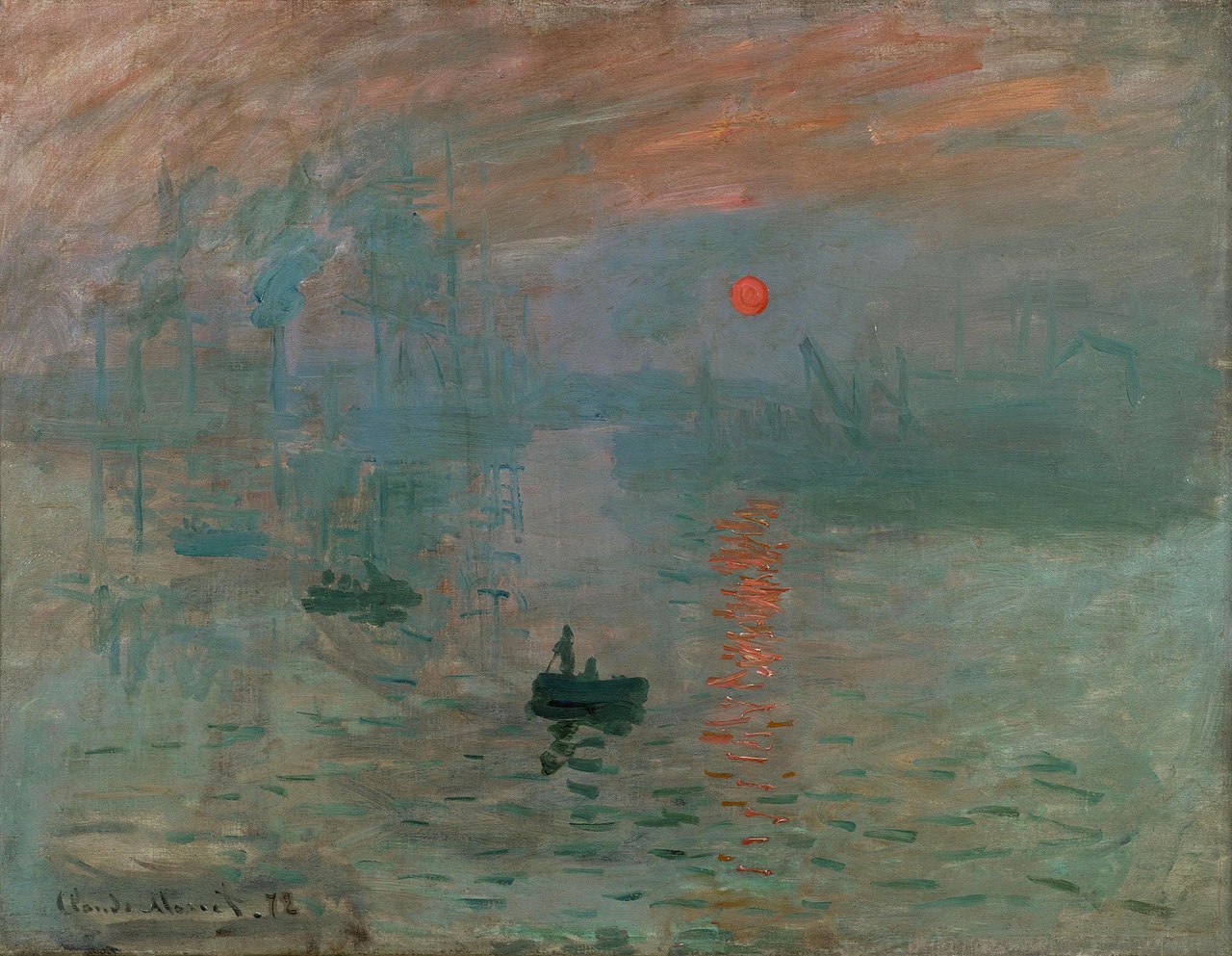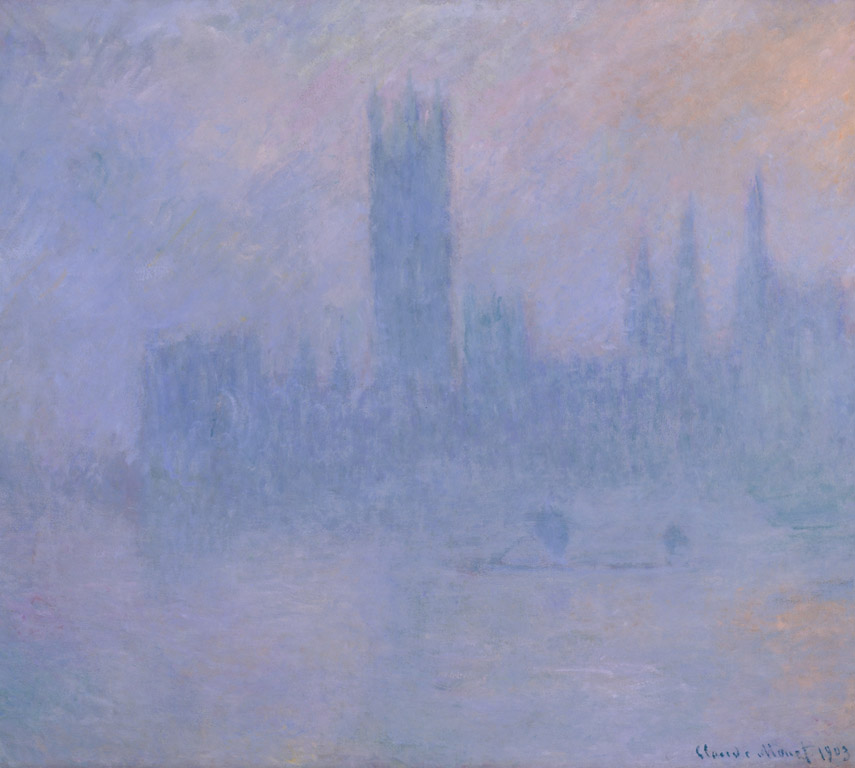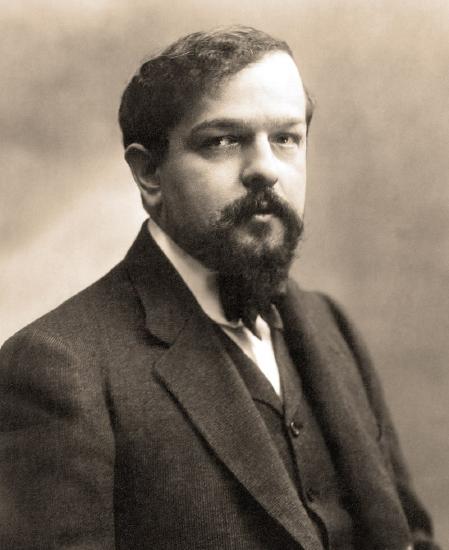6.2: Impressionism
- Page ID
- 165644
Impressionism: A French Artistic Movement

(above) "Impression, Sunrise," by Claude Monet - Public Domain
Take a look to the painting above. This is a famous work by Claude Monet, the father of Impressionism, an artistic movement that grew out of the 1870s in France. Along with his contemporaries like Pierre Renoir and Edgar Degas, Claude Monet painted in this particular style that emphasized the idea of blurriness. Notice how the lines are blurred together, the colors are blurred, and we really can't make out many details of what the painting is. If you were to examine this painting up close in real life, you'd actually be able to see globules of oil protruding from the canvas!
What do you think this is a painting of? Odds are, you can see that there's water, perhaps a boat or two (or three?!) and a sky with a setting sun in the background. But there's also a lack of detail that leaves the viewer with only an impression of what the image is perhaps supposed to be.
The term impressionist was originally used as a pejorative. Art critics of Monet's time thought that these paintings weren't all that good -- to them, this style was a fad, and not worth time or money.
Truth be told, these paintings are more beautiful when you see them in person. Regardless as to the painter, these works have several things in common:
1. they focus on blurred lines and colors
2. they often use many different shades of the same color (known as monochromaticism).
3. they're interested in how light affects the same landscape over a period of time. Imagine taking 10 different pictures of the same scene from different times in the day, and trying to depict all of them in a single painting.
This last point is worth exploring further. Let's look at two other works by Monet to illustrate this idea. We'll look at two of his works titled Houses of Parliament (1903) and Houses of Parliament (1904). Notice how each one of them uses many shades of the same colors, and blurrs them together? We know we're looking at buildings, we see a reflection in the bottom, so we know there's probably water. Monet painted 13 different versions of this scene! Each one of them approaches the scene by combining light and color in unique ways, almost as if to combine multiple scenes together into one.


Impressionism in Music: Claude Debussy.
 Claude Debussy (1862-1918) composed in the Impressionist style and is known as the Father of Impressionist music. Similar to the Impressionist style in visual media, the term was seen as a pejorative in music. While impressionism in visual arts came out of the 1870s, the movement in music didn't occur until around 1890 (as mentioned before, it was common for music to lag behind the visual arts by about 20 years or so).
Claude Debussy (1862-1918) composed in the Impressionist style and is known as the Father of Impressionist music. Similar to the Impressionist style in visual media, the term was seen as a pejorative in music. While impressionism in visual arts came out of the 1870s, the movement in music didn't occur until around 1890 (as mentioned before, it was common for music to lag behind the visual arts by about 20 years or so).
Debussy was born in France, where he also died. He wrote plenty of music for orchestra, piano, voice, and chamber ensembles, and he was known for his Impressionist techniques in music.
How does one create an Impressionist musical style? Think about it: Impressionism is about blurred lines and blurred colors.
In music, line often refers to melody and rhythm. Color refers to the scales, keys, and chords that the composer uses.
Blurred lines in music can refer to combining or merging melodies together, or by using different types of scales than traditionally used. The Video Presentation will outline the various scales including the pentatonic and whole tone scale that Debussy liked to use. It can also refer to blurred rhythms: creating a sense of uneasiness with rhythm, rather than grounding it to an easy-to-feel beat.
Blurred colors can refer to the combination of different chords with other chords. For instance, combining a C minor chord with a D major chord will result in a very dissonant and colorful sound (musicians might recognize it as a Cm9, #11, 13).
The video presentation discusses one of his most famous pieces, Voiles for solo piano. The piece is he name translates to "sails," as in "sails on a boat." As you listen to the music, you may feel that it simply doesn't go anywhere. And that's the point! Imagine if you're sitting in a boat in an ocean with no breeze. You'll feel like you're simply floating, stagnant in the water. Debussy creates this new effect by combining chords together, and using 2 different scales than traditionally used: the pentatonic and whole tone scales.
As you listen, ask yourself how Debussy musically embodies the Impressionist style in his prelude.
(above) Picture of Claude Debussy by Atelier Nadar, Paris. Public Domain-US.

